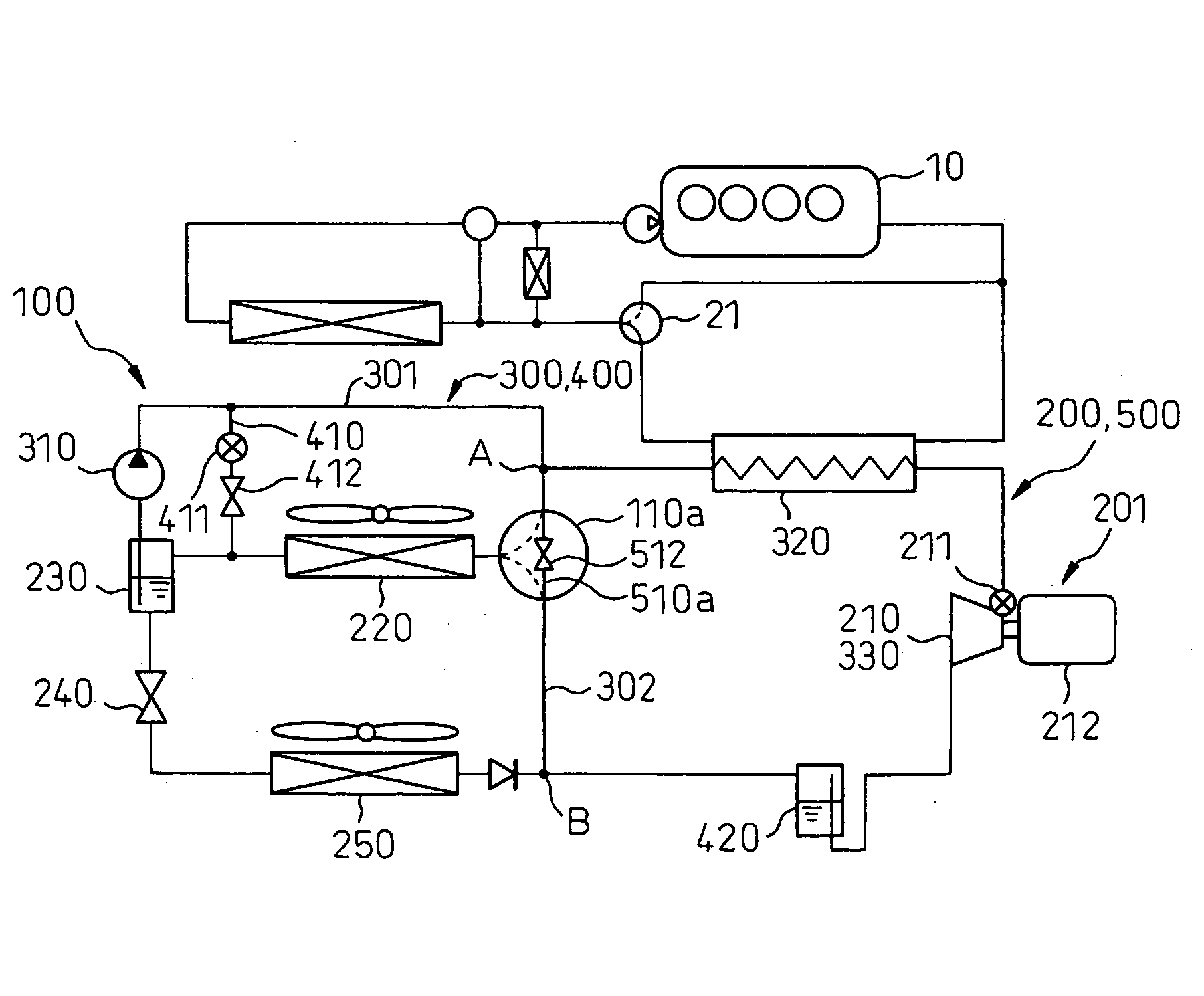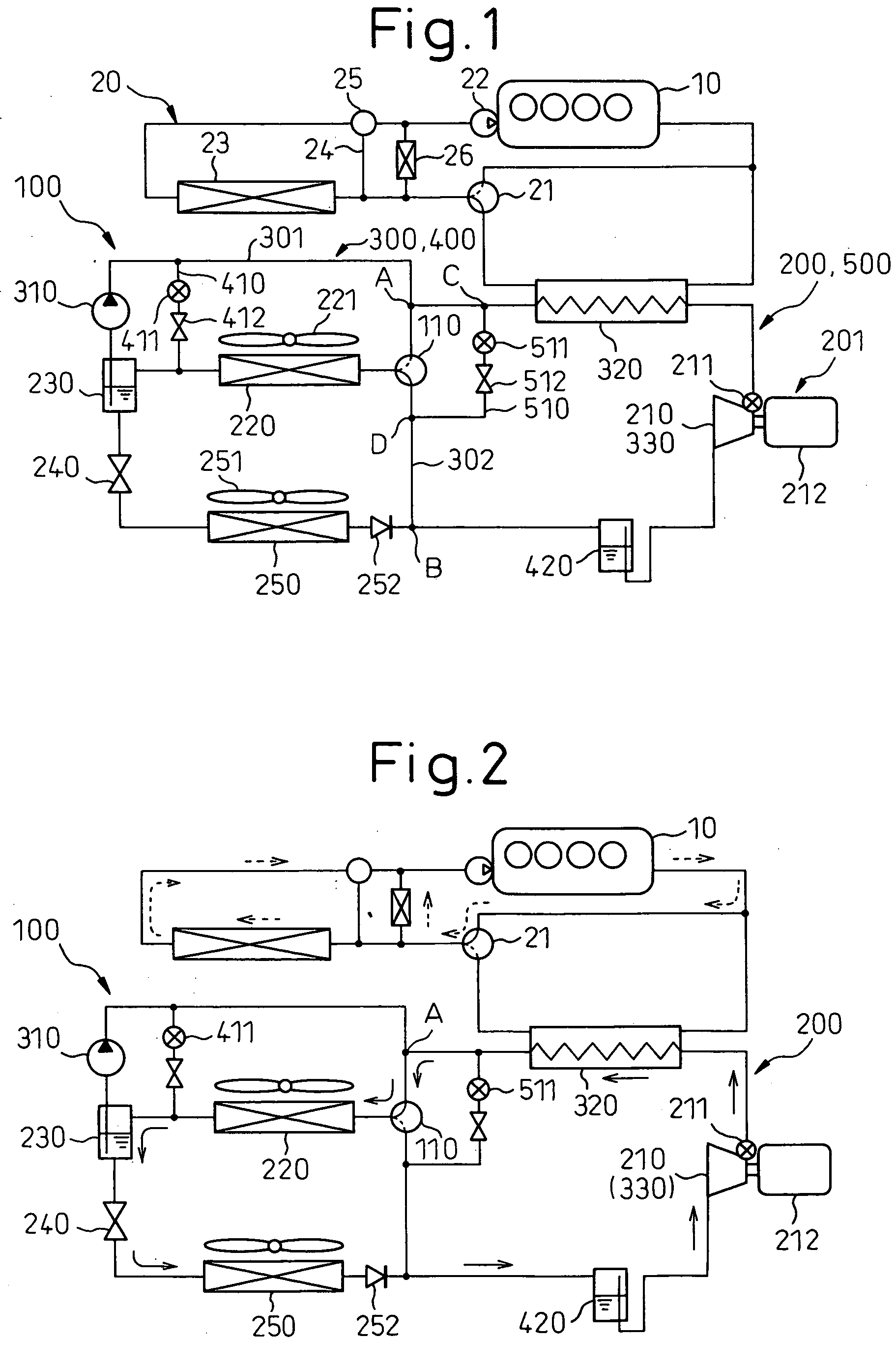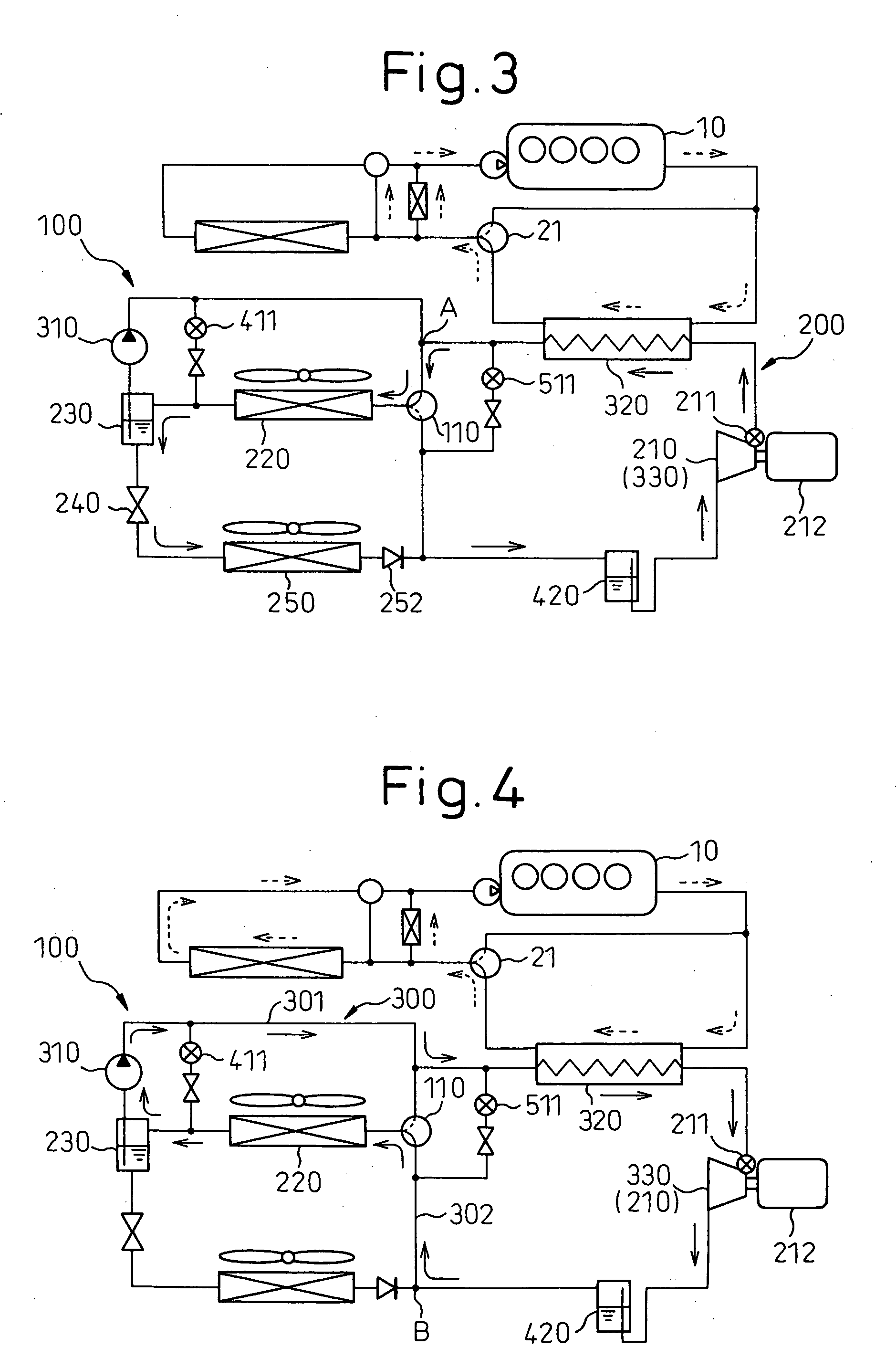Vapor compression refrigerator
a refrigerator and vapor compression technology, applied in the field of vapor compression refrigerators, can solve the problems of insufficient heat source for heaters, insufficient heating ability of heaters, insufficient heat supply of heat sources, etc., and achieve the effect of reducing the power of compressors and improving the engine warm-up performance of heat generating devices
- Summary
- Abstract
- Description
- Claims
- Application Information
AI Technical Summary
Benefits of technology
Problems solved by technology
Method used
Image
Examples
first embodiment
[0056] This embodiment represents an application of a vapor compression refrigerator 100 according to the invention to a climate control system of a hybrid car having a water-cooled engine (heat engine or internal combustion engine) 10 as a drive power source and a drive motor. FIG. 1 is a schematic diagram showing the vapor compression refrigerator 100 according to the first embodiment. According to this invention, the engine 10 corresponds to a heat generating device producing waste heat for temperature control.
[0057] The vapor compression refrigerator 100, as shown in FIG. 1, has built therein a Rankine cycle 300, a heat pump cycle 400 and a hot gas cycle 500 based on the well-known refrigeration cycle 200. The cycles 200, 300, 400 and 500 are explained in that order below.
[0058] First, in the refrigeration cycle 200, cold and heat are used for the air-conditioning operation by moving the heat on low-temperature side to high-temperature side. The refrigeration cycle 200 is conf...
second embodiment
[0109] A second embodiment of the invention is shown in FIG. 7. In the second embodiment, the condenser 220 of the first embodiment is changed. Specifically, the condenser 220 assumes the form of a subcool condenser having what is called a gas-liquid separator with a gas-liquid separator 230 and a liquid refrigerant super-cooler 231 arranged in that order on the outlet side of the refrigerant during the operation of the Rankine cycle. The condenser 220, the gas-liquid separator 230 and the liquid refrigerant super-cooler 231 may be combined into a gas-liquid separator-integrated subcool condenser.
[0110] As a result, during the operation of the Rankine cycle 300, the liquid-phase refrigerant flowing out from the condenser 220 and separated by the gas-liquid separator 230 is further cooled by the liquid refrigerant super-cooler 231 and supplied to the liquid pump 310. Even in the case where the pressure is reduced (negative pressure) while the liquid pump 310 sucks in the refrigerant...
third embodiment
[0113] A third embodiment of the invention is shown in FIG. 8. In the third embodiment, the accumulator 420 is set at a position different from the first embodiment.
[0114] In this case, the accumulator 420 is arranged outside the refrigerant path during the operation of the refrigeration cycle 200 (while the evaporator 250 exhibits the refrigeration function). Specifically, the accumulator 420 is interposed between the cycle switch valve 110 and point B (second bypass 302).
[0115] As a result, the refrigerant is prevented from flowing through the accumulator 420 during the operation of the refrigeration cycle 200, thereby reducing the pressure loss during the refrigerant flow for an improved refrigeration ability.
PUM
 Login to View More
Login to View More Abstract
Description
Claims
Application Information
 Login to View More
Login to View More - R&D
- Intellectual Property
- Life Sciences
- Materials
- Tech Scout
- Unparalleled Data Quality
- Higher Quality Content
- 60% Fewer Hallucinations
Browse by: Latest US Patents, China's latest patents, Technical Efficacy Thesaurus, Application Domain, Technology Topic, Popular Technical Reports.
© 2025 PatSnap. All rights reserved.Legal|Privacy policy|Modern Slavery Act Transparency Statement|Sitemap|About US| Contact US: help@patsnap.com



